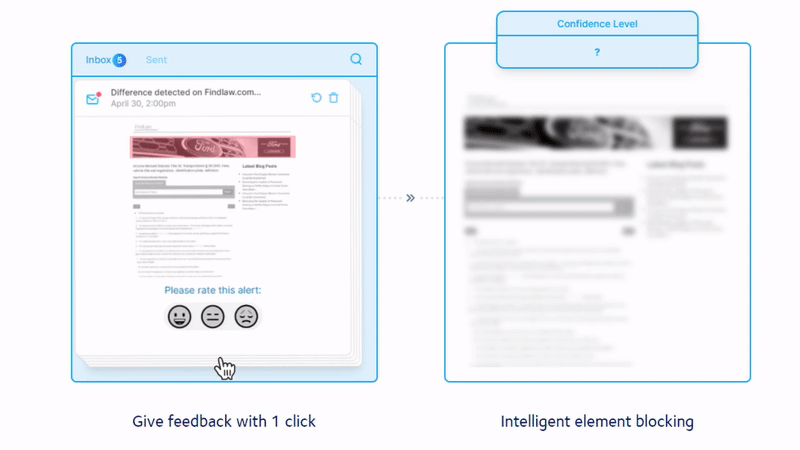When you hire a marketing consultant, you don’t necessarily expect to wind up discussing your life’s purpose. Yet, that is what Spanish marketing expert and entrepreneur Alex Barrera often ends up doing with startup founders who hire him to help improve their pitch. They think they are going to get help convincing investors, and they do, but the byproduct of the process is that they reframe their startup’s vision.
In this context, ethical and philosophical considerations aren’t that far away, because more often than not, this includes a deep look at how their company impacts society. “The days where you could do whatever you wanted and dive into grey legal or moral areas are dwindling,” Barrera says. “Growth companies need to be careful about the potential fallouts of pursuing such strategies. While there are still plenty of investors that push for “growth at any cost,” the social pressure is changing and it’s suddenly becoming costlier to take such stances.”
You may have spotted Barrera’s cowboy hat at one of the many startup conferences he is involved with as a mentor, judge, host or speaker — and he does wear many hats.
Having previously co-founded two startup accelerators and Europe-focused tech publication Tech.eu, he now authors The Aleph Report, a periodical publication on cutting-edge technology and its implications. But it is through his Press42 venture that he collaborates with startups and corporations on organizational storytelling and strategic communications, and it is also what we discussed in the interview below (which has been edited for length and clarity).
TechCrunch is asking founders who have worked with growth marketers to share a recommendation in this survey. We’ll use your answers to find more experts to interview.
What do people often misunderstand about pitch training?
Well, it depends on their experience level. When first-time entrepreneurs hear about pitching, they immediately think of the infamous “elevator pitch,” roll their eyes and moan. For those with a bit more experience, pitching is about a set of slides to achieve a certain goal, mostly funding. However, seasoned managers end up discovering that telling the story of their product or service is not a one-way street. Having to sell a future vision of where the company is heading invariably affects your conception of the product in the now and what you need to build to achieve it. The vision impacts the product, because you need consistency between the product and storytelling.
What type of companies do you help?
I have been helping startups with pitching for years. This used to be mostly early-stage startups, and in groups, with accelerators and startup competitions calling me to help their entire batch or portfolio. I still provide that sort of training, but these days I will more often work one-on-one with a single client that is at a later stage. And I also sometimes work with tech companies getting ready for M&As, as well as large corporations.
And what is your sweet spot for startups you work with?
For one-on-one work, I have a preference for David versus Goliath, and less sexy spaces. I love these companies that were built without the noise: there’s a lack of hubris, they are really humble, but the numbers are there — the founders could be obnoxious, but it’s the opposite. I don’t work with companies that sell smoke and mirrors or hurt society because they shamelessly disregard any responsibility for their impact on others.
Luckily, that’s rarely the case of people who call me. Usually, they are a bit out of the circuit, and they often have impostor syndrome. So my work is also about helping them understand what they can be proud of in what they do, and then how to show that in their pitch. They value talking to someone who understands them and their challenges. I spend a lot of time doing research on all verticals and thinking about the future, so the conversation will typically go like this: “Dude, you get it!”
What is one of your favorite things about one-on-one pitch-related consulting work?
I find it very fulfilling to see how much value it brings to those involved. I am also a developer, and I do project management, but most of the consulting I do is not the kind of growth marketing stuff that takes more time to show results. When you do growth hacking at the product level, it takes time to see the impact, and even then, it’s not always easy to connect the dots.
When we work together on their pitch, CEOs can instantly see if the new pitch resonates or not; and they also know if the exercise itself worked for them. Working on a pitch requires a lot of reflection and it entails a lot of tension between you and the CEO.
This is especially true at the beginning, when you keep questioning why they did this or that, what the product provides and to whom, or why it grew here and not there. All these questions force many founders and managers to stop and think hard about the product, the market or the roadmap. Sometimes it pushes them to provide data to back up certain claims. The process pushes them to revisit old biases, beliefs or even myths around their company. Many people are surprised by how much clarity they gain into their company when they work on a pitch.
Do you only work with founders and executives?
Sometimes, the clarity and the strategic insight that working on a pitch provides to founders or CXOs becomes a trigger for them wanting to provide that level of understanding to other areas of the company, like sales, customer support or even the product team. In my case, being a developer myself enables me to switch and adapt my process to any layer of the organization, including the development team.
This is rare, but it eventually turns me into a kind of translator of the challenges of different parts of an organization, acting ultimately as the connector bridging different perceptions. In the end, that’s exactly what storytelling provides. It’s not just a tool for pitching, it’s a brutally effective way to communicate between humans, especially around challenging topics.
How would you describe the value that executives get from your collaboration?
One of the usual and even surprising values for most executives is the insight the process provides. When someone is running either a big company or a scaleup, their day to day is all about growing. They rarely have time to sit down and think about where they’re heading in terms of future product. They do have a roadmap, and their KPIs, but I rarely see a strong future vision broken down into steps.
The pitching process provides them with two valuable things: time, and perception. Time because as they’re paying me, they’re stuck with me and need to allocate time for our sessions. That bubble, and the need to build a coherent story that tells why the company is at that particular point, create tremendous insight for most. And then, there’s perception. It’s funny because they’re the ones that provide all the pieces of the picture, I just help them put them together and then point at the obvious.
This process is very rewarding at a personal level for them. It helps them build a confidence that, while it was always there, it rarely shone through the pitch before. It also makes them reflect on where they want to go next, not just from a product perspective, but from a mission’s perspective. It reconnects them with that side that most of us care about, and the personal questions we ask ourselves about life and meaning.
How do you bridge the gap between what your clients already know and what’s next?
My clients already know how to grow a company. I always keep this in mind, not just with startups, but also with big corporations – too often, I see consultants talking to them and starting by telling: “You are doing it wrong!” Well, they got to where they are, didn’t they? It doesn’t mean that they don’t need help, but you can make them see that, you don’t have to dismiss what they have achieved. I see myself as the person that helps them get to the next level and build on top of what they have already done. Sometimes it takes some bruising to get there, but there is always massive respect for their achievements.
These people are very good professionals. It’s not that they don’t see or can’t see the vision. It’s that the need to connect the dots in detail allows for the emergence of a strategic vision of the organization. Now, here is where the real “coaching” kicks in. When such a picture emerges, many founders or executives tend to shy away from it. They have a hard time believing that they might be onto something groundbreaking or actually winning in their respective markets.
This is especially true for many scaleup companies. They’ve been fighting, first for market fit, and later on for market share, that they freeze at the possibility that they might be doing a fantastic job. Part of my role is precisely to break through their impostor syndrome and encourage them to be bolder, to believe in themselves, to trust the data.
How do you promote your services?
Well, it would be very hard for me to do cold calling. I wouldn’t be able to say: “It’s not just about pitching, you are going to see the future of your company!” – so I stopped even trying to market that. My best marketing tool is word of mouth from my clients, or even from people that see me perform on stage. But even then, people call for help with a specific milestone, like raising a round. It’s only through the process that they see that there’s way more to it. They begin to understand other parts about themselves that either enhance their capacity to raise more funds, or even take them to the next level like an acquisition or the development of a major breakthrough.
Have you worked with a talented individual or agency who helped you grow your startup?
Respond to our survey and help us find the best startup growth marketers!
What do you end up actually working on with founders?
Going higher up the chain, the pitch becomes a very powerful tool not just for fundraising, but also for thinking about your company strategically. It’s a place where founders can reach clarity about their strategy and what really matters – questions they don’t have time for on a day-to-day basis. They allocate time to it because they think it will help with fundraising, and then they find out that it helps them understand their company.
So typically, they will call me because they are raising a Series B round, or a very large A round. They realize that to unlock the next milestone, they need to fine-tune what they say. The game is different; it’s not about market fit anymore, or just about gaining market share, and what worked for them just no longer works – especially if they were semi-bootstrapped up to that point. They need to talk to someone who understands them and can help them prepare for the future, for instance by researching certain pitfalls or trends. I’m not just the guy that “pitches” but the guy that’s going to provide you with ammo to help you build a compelling case for your audience, whatever it is. The pitch is just an excuse!
What’s your take on comparing your startup to another one when pitching; for instance, calling yourself the “Uber for X”?
Analogies are very powerful. The major challenge when you are pitching any company, even a late-stage one, is that people have a tendency to put you in a box. So you have two options: either you let them do it, or you provide the tools to put you in a box. That’s where analogies work really well.
But then, who do you compare yourself to? It’s a challenge, because two elements are becoming increasingly important: capturing the right trends of the moment, and the ethics of how you do what you do. You want to control which box they place you, ideally one that’s trendy but at the same time one that doesn’t position you in apparently direct competition with someone you don’t want to be associated with.
Why do startups need to be careful when communicating?
Over the last few years, we have seen how startups are no longer seen as innocent by society; they no longer have ‘carte blanche’, and society is becoming a lot more sensitive. There’s a polarization issue around many topics, and we are increasingly going to see a clash between society and startups. It is even going to increase post-COVID, with tensions around automation versus jobs. And the thing is, scale-ups and growth-stage startups have a choice in how they market themselves; so they need to be aware of ethical concerns that may arise sooner than later.
Society is going to ask you for responsibility. What’s happening with big brands is trickling down, and scale-ups are hitting that threshold sooner. Typically, it catches them unprepared, because they reach that stage only knowing local feelings about what they do, and suddenly getting national or regional blowback. Or they expand internationally with local operations led by really young people with no experience in dealing with politics, who suddenly face strong local blowback.
All of this has a lot to do with pitching, because it’s not about product anymore. So for instance, it’s about convincing public authorities at different levels to let you operate, when their incentives are very different from investors’. It’s B2G2C – business to government to consumer. And we are seeing more and more startups, with regulation as a factor in their operations.
And how can you talk to public authorities, customers and investors in a unified pitch?
The major pitch needs to bring all elements together. It needs to be clear on what you do, and hit the right notes on ethical concerns. It’s important both for regulators and for fundraising; because from the investors’ perspective, it also reduces uncertainty around your business. As a scale-up, your ability to scale is a concern, so it helps to show that you are thinking and planning around societal impact.
I have to say that an increasing amount of investors do genuinely care about this. It may be because they have been burned, for instance from seeing regulatory blowback first-hand, or just because they are growing conscious. There are still some investors that have the ‘Uber mindset’ and only care muscle – grow first, and only then, deal with regulators – but more and more, VCs are aware that this might not fly, because society is changing. The pandemic is just highlighting this even more.
What about startups? Do they also care more about their societal impact?
I think it’s a pendulum, and the current generation is a child of the previous regulatory blowback. Crypto might still be on the other side, but increasingly, startups are aware that there are societal implications they will have to deal with. I also try to bring that message across when I prepare my clients to pitch – and warn that it sometimes happens very quickly: we’ve seen how one prohibition in one place can spread like wildfire. So you need to regulate your initial message, and also be prepared to adapt quickly.
https://ift.tt/eA8V8J How pitch training can help startups get their story right https://ift.tt/36EKZfV

































